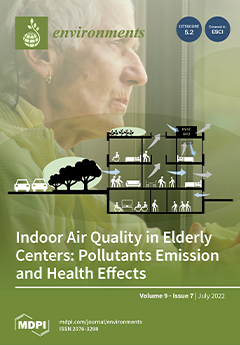During 2006–2008, a pipeline was buried in Vallona lagoon in the Northern Adriatic Sea (Italy). A Before-During-After environmental monitoring programme was scheduled to monitor possible alterations. Bioaccumulation of metal(loid)s, BTs (butyltins) and HMW-PAHs (High Molecular Weight Polycyclic Aromatic Hydrocarbons), and biological responses (Condition
[...] Read more.
During 2006–2008, a pipeline was buried in Vallona lagoon in the Northern Adriatic Sea (Italy). A Before-During-After environmental monitoring programme was scheduled to monitor possible alterations. Bioaccumulation of metal(loid)s, BTs (butyltins) and HMW-PAHs (High Molecular Weight Polycyclic Aromatic Hydrocarbons), and biological responses (Condition index, air Survival—LT
50, Acetylcholinesterase, Micronuclei—MN, acyl-CoA oxidase, catalase, malondialdehyde—MDA, and the total oxyradical scavenging capacity—TOSCA) were investigated in Manila clams (
Ruditapes philippinarum) from November 2005 to June 2015.
In opera (IO) results showed higher levels of HMW-PAHs (73 ± 13 ng/g), BTs (90 ± 38 ng Sn/g) and increasing levels of Pb (6.7 ± 0.7 mg/kg) and Zn (73.6 ± 6.08 mg/kg) probably linked to works. Other contaminant alterations, especially metal(loid)s, before (AO) and after (PO) the burial, were attributed to a general condition of the area and mostly unrelated to works. In addition, LT
50, MN and TOSCA showed alterations, probably due to hotspots occurring in IO. TOSCA and MDA increases, right after the burial, were considered delayed responses of IO, whilst other biological responses detected later were connected to the general condition of the area. Comparisons between results of Principal Component Analyses (PCAs) highlighted partial overlapping of AO and IO, whilst PO differed only for contaminants. Visual correlations between PCAs highlighted the biomarkers’ latter response.
Full article





